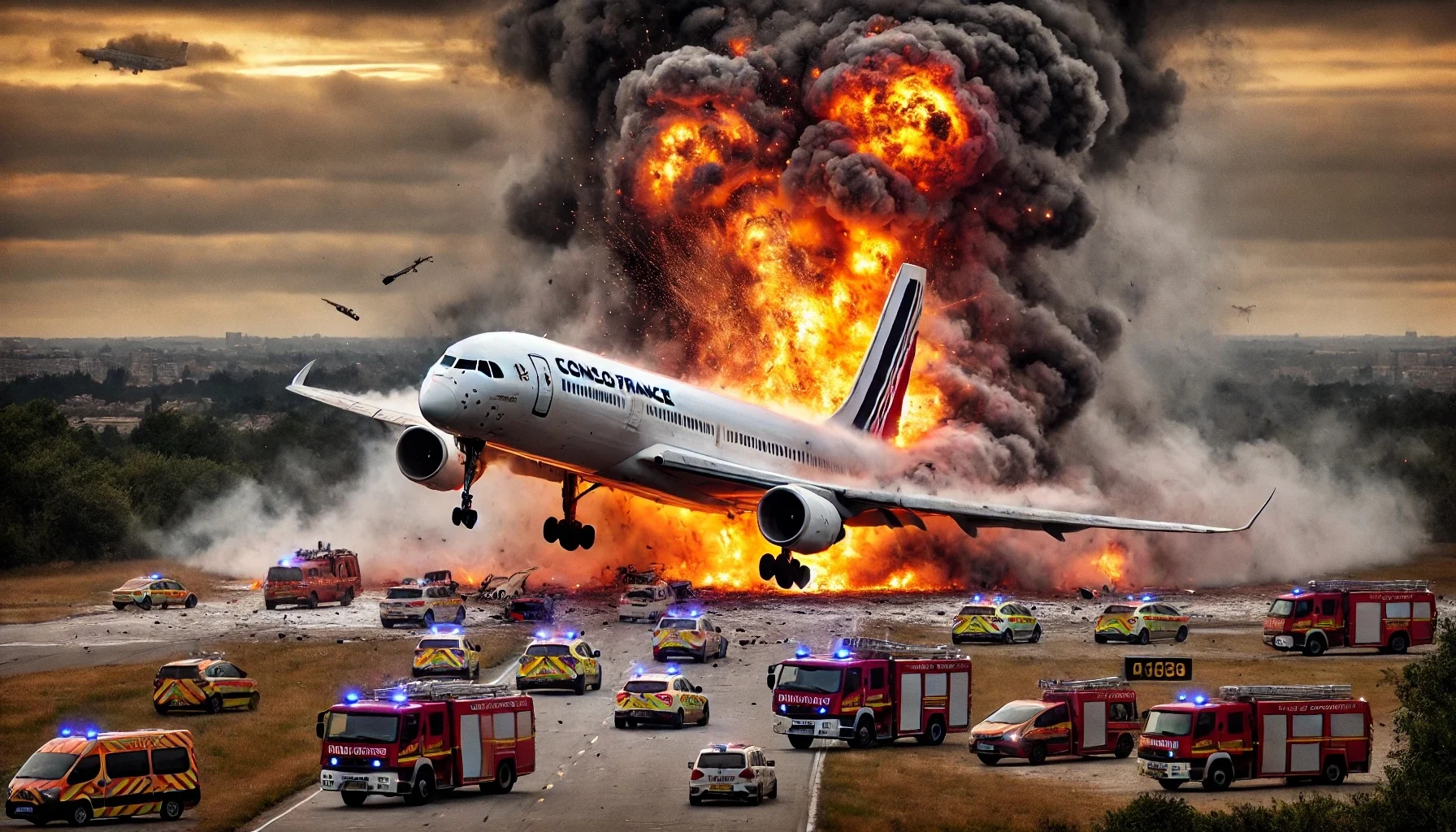
The Concorde Air France Flight 4590 Crash
by: The Calamity Calendar Team
July 25, 2000
The Pinnacle of Luxury Travel
For over two decades, the Concorde symbolized the pinnacle of luxury air travel. With its supersonic speeds, passengers could cross the Atlantic in just over three hours, enjoying unparalleled service and comfort. On July 25, 2000, Air France Flight 4590 was preparing for such a journey from Paris-Charles de Gaulle Airport to John F. Kennedy International Airport in New York. The aircraft, registered as F-BTSC, had been in service since 1980 and boasted a strong safety record.
Pre-Flight Preparations and Takeoff
On that fateful day, the aircraft was meticulously prepared for departure. A total of 100 passengers, nine crew members, and four Concorde employees boarded the flight, anticipating the swift journey across the Atlantic. At 16:43 CET, the aircraft began its takeoff roll. However, just moments into its run, disaster struck.
A Fatal Chain of Events
As the Concorde sped down the runway, it ran over a metal strip that had fallen from a Continental Airlines DC-10 that had taken off just minutes earlier. This metal strip set off a catastrophic chain of events. The left main landing gear tire burst, and debris from the tire punctured a fuel tank. Almost immediately, a severe fire erupted.
Thanks for subscribing!
Despite the growing fire, the Concorde managed to lift off at 16:44 CET. The pilots fought desperately to control the aircraft, but it struggled to gain altitude and airspeed. Within seconds, engines one and two failed, leading to a significant loss of thrust. Just two minutes after takeoff, at 16:45 CET, the aircraft crashed into a hotel in Gonesse, a suburb near the airport.
The Aftermath
The crash resulted in the immediate deaths of all 109 individuals on board. Additionally, four people on the ground lost their lives, and several others sustained injuries. The Concorde, the hotel, and several surrounding structures were destroyed, leaving a scene of devastation and heartbreak.
A Turning Point in Aviation
The immediate response from emergency services was swift, but the intensity of the fire and impact meant there were no survivors. The Bureau of Enquiry and Analysis for Civil Aviation Safety (BEA) led an in-depth investigation. The investigation concluded that the metal strip on the runway was the catalyst for the series of failures that led to the crash.
Policy Changes and Legal Repercussions
The aftermath of the crash brought significant changes to aviation safety. Aircraft maintenance protocols were tightened, and runway inspection procedures were enhanced to prevent similar incidents. Modifications were also made to the Concorde’s fuel tanks to improve their puncture resistance. In a landmark ruling in 2010, Continental Airlines and a mechanic were found criminally responsible for the crash due to negligence in maintaining the DC-10 from which the metal strip had fallen.
The End of an Era
The tragic crash of Flight 4590 had far-reaching consequences. Air France and British Airways, the only two airlines operating Concorde flights, temporarily grounded their fleets. Despite efforts to enhance the aircraft’s safety, the incident accelerated the retirement of the Concorde from commercial service in 2003. The crash remains the only fatal accident involving the Concorde, a stark reminder of the delicate balance between technological advancement and safety.
Lessons Learned
Today, the Concorde crash stands as a pivotal moment in aviation history. It underscores the critical importance of rigorous maintenance and safety protocols. Modern advancements in aircraft design and materials have been partly inspired by the lessons learned from this tragic event. The legacy of Flight 4590 continues to influence aviation safety standards, ensuring that the skies remain safer for future generations.
The story of Concorde Air France Flight 4590 is a somber chapter in the history of aviation. It serves as a powerful reminder of the inherent risks of flight and the continuous need for vigilance and improvement in aviation safety.
Stay in the Loop!
Become a Calamity Insider and get exclusive Calamity Calendar updates delivered straight to your inbox.
Thanks! You're now subscribed.